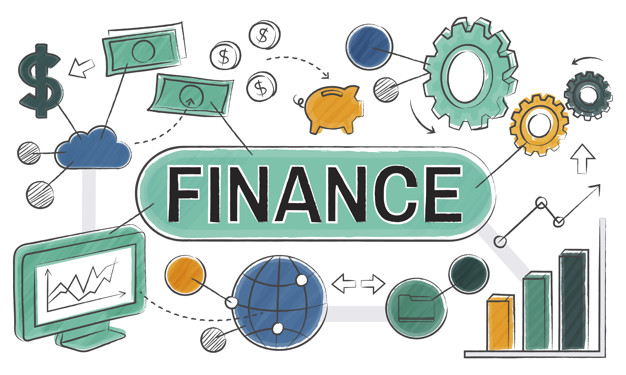Embarking on the path to financial well-being can feel like navigating a complex maze. However, by viewing it as a journey with distinct stages, you can systematically build a solid financial foundation and work towards your long-term goals. This article lays out your financial planning roadmap, guiding you from the essential first step of budgeting all the way to the wealth-building power of investing.
Stage 1: Laying the Foundation – Mastering the Art of Budgeting
Before you can even think about investing, you need to understand where your money is going. Budgeting is the bedrock of any sound financial plan. It’s not about restricting yourself; it’s about gaining control and making conscious decisions about how you allocate your resources.
- Track Your Income and Expenses: The first step is to meticulously track all sources of income and every single expenditure. Utilize budgeting apps, spreadsheets, or even a simple notebook to record your financial inflows and outflows for at least a month. Categorize your expenses (housing, food, transportation, entertainment, etc.) to identify spending patterns.
- Analyze Your Spending Habits: Once you have a clear picture of your income and expenses, analyze where your money is going. Are there areas where you’re overspending? Are your expenses aligned with your priorities? Identifying leaks in your spending is crucial for freeing up funds for your financial goals.
- Create a Realistic Budget: Based on your income and spending analysis, create a budget that allocates your income to different categories. Consider various budgeting methods like the 50/30/20 rule (50% needs, 30% wants, 20% savings/debt repayment) or zero-based budgeting (allocating every dollar). The key is to create a budget that is sustainable and works for your lifestyle.
- Regularly Review and Adjust: Your budget is not a static document. Life circumstances change, so it’s essential to review your budget regularly (at least monthly) and make adjustments as needed. This ensures your spending plan remains relevant and effective in helping you achieve your financial objectives.
Stage 2: Building Security – Establishing an Emergency Fund and Managing Debt
With a solid budget in place, the next stage focuses on building financial security. This involves creating a safety net and tackling any existing debt.
- The Crucial Emergency Fund: An emergency fund is non-negotiable. It acts as a financial cushion to absorb unexpected expenses (medical bills, job loss, car repairs) without derailing your financial progress or forcing you into debt. Aim to save 3-6 months’ worth of essential living expenses in a readily accessible, low-risk account (like a high-yield savings account).
- Strategic Debt Management: High-interest debt can significantly hinder your ability to build wealth. Develop a strategic plan to pay down your debts. Prioritize debts with the highest interest rates (debt avalanche method) or focus on the smallest balances for psychological wins (debt snowball method). Avoid accumulating new debt and make more than the minimum payments whenever possible. Understanding the terms and interest rates of your debts is crucial for effective management.
Stage 3: Laying the Groundwork for Growth – Setting Financial Goals
Once you have a budget and a safety net, it’s time to define your financial aspirations. Clear goals provide direction and motivation for your financial planning efforts.
- Identify Your Short-Term, Medium-Term, and Long-Term Goals: Think about what you want to achieve financially in the next year, within the next 5 years, and beyond 5 years. Examples include saving for a down payment on a car (short-term), funding a vacation (medium-term), or planning for retirement (long-term).
- Make Your Goals SMART: Ensure your goals are Specific, Measurable, Achievable, Relevant, and Time-bound. Instead of saying “save for retirement,” aim for “contribute $X per month to my retirement account to have $Y by age Z.”
- Prioritize Your Goals: Not all goals are created equal. Determine which goals are most important to you and allocate your resources accordingly. This might involve focusing on debt repayment before aggressively investing, depending on your individual circumstances.
Stage 4: Planting the Seeds of Wealth – Understanding the Basics of Investing
With a budget, emergency fund, and clear financial goals in place, you’re ready to enter the realm of investing. Investing is crucial for long-term wealth building as it allows your money to potentially grow over time, outpacing inflation.
- Understand Your Risk Tolerance: Before investing, assess your comfort level with potential investment losses. Your risk tolerance will influence the types of investments you choose. Younger individuals with a longer time horizon typically have a higher risk tolerance than those closer to retirement.
- Learn About Different Investment Vehicles: Familiarize yourself with various investment options, such as stocks (representing ownership in a company), bonds (representing loans to governments or corporations), mutual funds (pools of money invested in a diversified portfolio), and Exchange-Traded Funds (ETFs) (similar to mutual funds but trade like stocks).
- Start Small and Diversify: You don’t need a large sum of money to start investing. Many platforms allow you to begin with small amounts. Diversification – spreading your investments across different asset classes, industries, and geographies – is crucial to mitigate risk. Don’t put all your eggs in one basket.
- Consider Tax-Advantaged Accounts: Take advantage of tax-advantaged retirement accounts like 401(k)s, IRAs, or other local equivalents. These accounts offer tax benefits that can significantly boost your long-term returns.
Stage 5: Nurturing Your Growth – Developing a Long-Term Investment Strategy
Investing is not a one-time event; it’s a long-term strategy. Consistency and a well-thought-out plan are key to achieving your financial goals.
- Develop an Investment Policy Statement (IPS): While not strictly necessary for beginners, an IPS outlines your investment goals, risk tolerance, time horizon, and investment strategy. It helps you stay disciplined and avoid emotional decision-making.
- Adopt a Long-Term Perspective: Avoid trying to time the market or making impulsive investment decisions based on short-term fluctuations. Investing is a marathon, not a sprint. Focus on long-term growth and the power of compounding.
- Consider Dollar-Cost Averaging: This strategy involves investing a fixed amount of money at regular intervals, regardless of market fluctuations. It can help reduce the risk of buying high and averaging out your purchase price over time.
- Regularly Review and Rebalance Your Portfolio: Periodically review your investment portfolio to ensure it still aligns with your goals and risk tolerance. Rebalancing involves adjusting your asset allocation by selling some assets and buying others to maintain your desired mix.
Stage 6: Protecting Your Harvest – Insurance and Estate Planning
As your wealth grows, protecting it becomes increasingly important. This stage involves ensuring you have adequate insurance coverage and planning for the future.
- Adequate Insurance Coverage: Ensure you have sufficient health, life, disability, and property insurance to protect yourself and your assets from unforeseen events that could lead to significant financial losses.
- Basic Estate Planning: Even if you’re just starting out, consider basic estate planning documents like a will to ensure your assets are distributed according to your wishes and to provide for your loved ones.
The Ongoing Journey:
Financial planning is not a static destination but an ongoing journey. As your circumstances, goals, and the economic landscape evolve, your financial plan should adapt accordingly. Regularly review your budget, savings, investments, and insurance coverage to ensure you remain on track to achieve your financial aspirations. By progressing through these stages, from the foundational step of budgeting to the wealth-building power of investing, you can build a secure and prosperous financial future.




